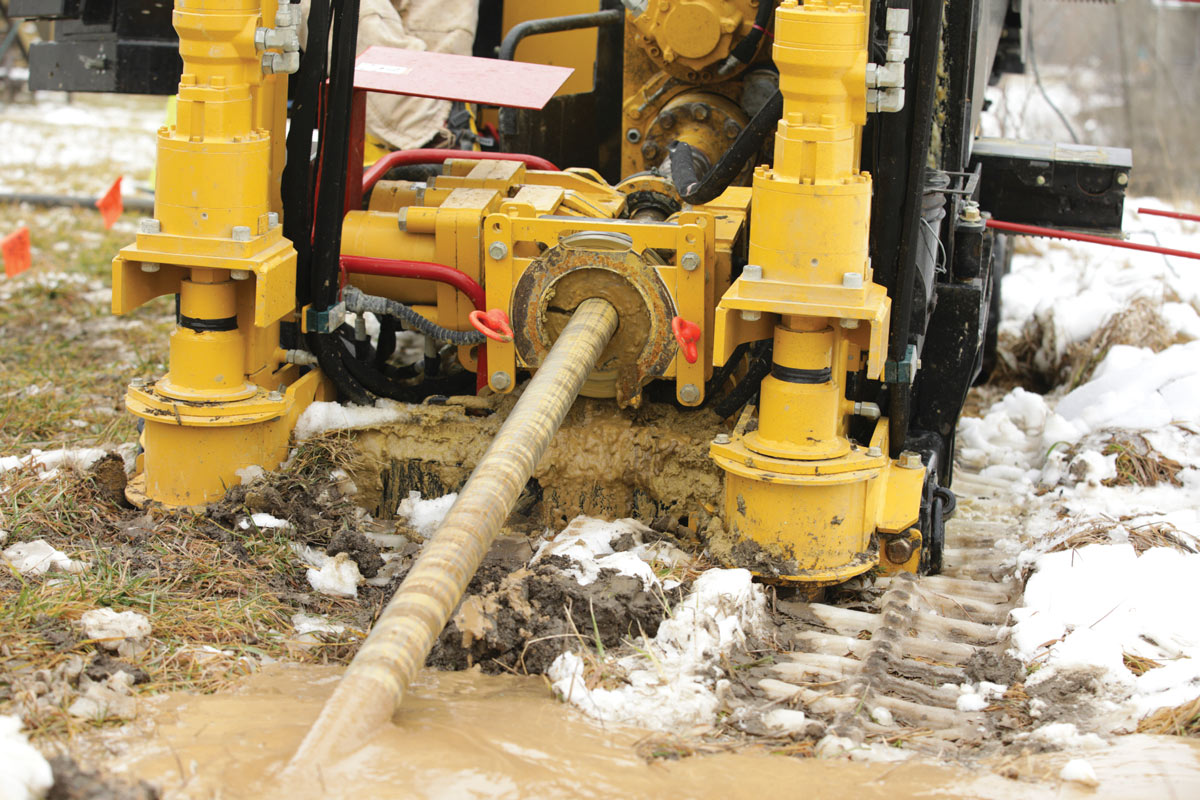
Trenchless Tech Forum: The Best Bits for Drilling in Shale
 Mighty shale. Though this fine-grained sedimentary rock runs on the soft side of earthen material, it can present drilling challenges when using the wrong tool. Some drillers try to cut corners and use inappropriate HDD tools for the material they’re in which can result in slow going or broken equipment. Our decades of experience developing HDD tooling solutions for drillers in every condition has shown us how shale responds to various equipment and which tools produce the fastest and most accurate drilling results.
Mighty shale. Though this fine-grained sedimentary rock runs on the soft side of earthen material, it can present drilling challenges when using the wrong tool. Some drillers try to cut corners and use inappropriate HDD tools for the material they’re in which can result in slow going or broken equipment. Our decades of experience developing HDD tooling solutions for drillers in every condition has shown us how shale responds to various equipment and which tools produce the fastest and most accurate drilling results.
First, a little background on how shale is formed and its unique characteristics. When silt- and clay-sized minerals (called mud) compact over time, they form a type of fine-grained sedimentary rock known as shale. For this reason, shale rocks are also known as “mudstones.” Shale is both fissile and laminated, meaning that the rock splits into pieces along its thin layers. This splitting can be performed easily with application of the correct HDD tools. But because shale runs in layers through the earth, the wrong tools can glance off the surface and inhibit your drill from reaching your desired depth.
A duckbill may not be your best choice – if production matters
Just because shale isn’t as tough as solid rock, don’t make the mistake of using a traditional OEM duckbill that comes with your rig. Even if your duckbill has carbide teeth, a duckbill’s tooth tips and overall design are too smooth to deliver the shredding action you need to cleanly cut through the shale surface. You might end up drilling in the same spot or running along the top of the shale layer without penetrating it. Using the wrong bit might also result in the need to back out of the hole and re-drill a new pilot so you can approach the shale at a steeper angle.
Tools with pointed teeth are most powerful
To penetrate the shale at the angle required by horizontal directional drilling, you need HDD tooling solutions designed specifically for success in shale. Your drill bit needs to feature sharp points that have the strength to ram through shale’s tough exterior. Once you punch through the surface, these points fracture the material and crush it into smaller pieces to slurry out. We developed the Eagle Claw specifically for shale drilling. The replaceable carbide cutter teeth are designed to penetrate rocky material like shale and can be easily replaced when worn down, or swapped out with smoother teeth for use in softer material.
Still too tough? Use a mud motor
Some types of shale are too hard to drill, even if you’re using a specialty shale bit like Eagle Claw. In these cases, it’s best to use tools that are designed for solid rock. Mud motors are expensive and require a ton of fluid, but consider the cost of wearing out drill head after drill head and the work stoppage that results from replacing tools. In these cases, the mud motor, outfitted with a PDC or tri-cone bit, is worth the investment. Another benefit of using a mud motor is shown in your production increase. A standard bit might be able to get through harder shales, but it will be slow going. The mud motor and PDC bit will pulverize the shale and drastically increase your footage production. With this type of production, your mud motor will soon pay for itself.
Beware of balling up
Because shale started as a clay formation, the combination of fluid and the pulverizing of the shale can cause the material to return to its clay-like origins. You must ensure that you have the ideal fluid mixture to not only carry out the cuttings, but to keep your tooling from balling up should the shale react like a sticky clay. For these reasons, your choice of backreamer matters, too. Your backreamer must be able to handle the hardness of shale and balance the sticky properties of clay. This means ample cutting teeth to shatter the shale that are spaced and positioned so they act like the blades of a blender, mixing up the cuttings instead of allowing the material to ball up and slow you down.
Shale tools work well in other conditions so it’s worth it to have a couple in your toolshed. Look for shale tools with interchangeable cutter teeth so you can swap out the ideal teeth for your conditions or replace one if it breaks. Resist the temptation to ramp up the power on your drill rig if you’re having a hard time penetrating shale. A simple upgrade to HDD tools that have been proven to perform best in shale will save you time, headaches, and equipment costs.




